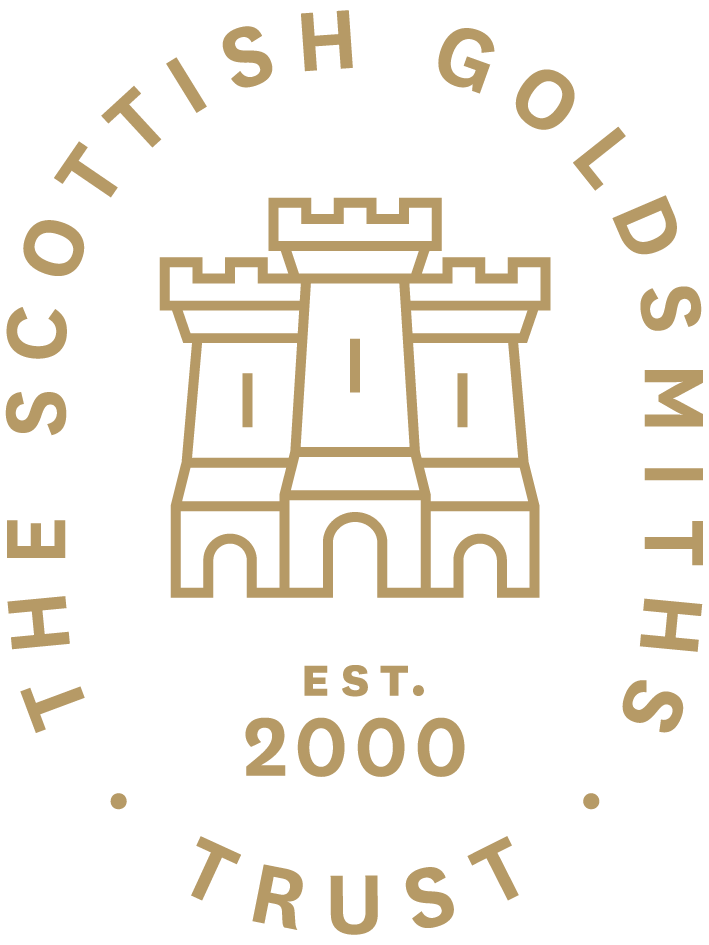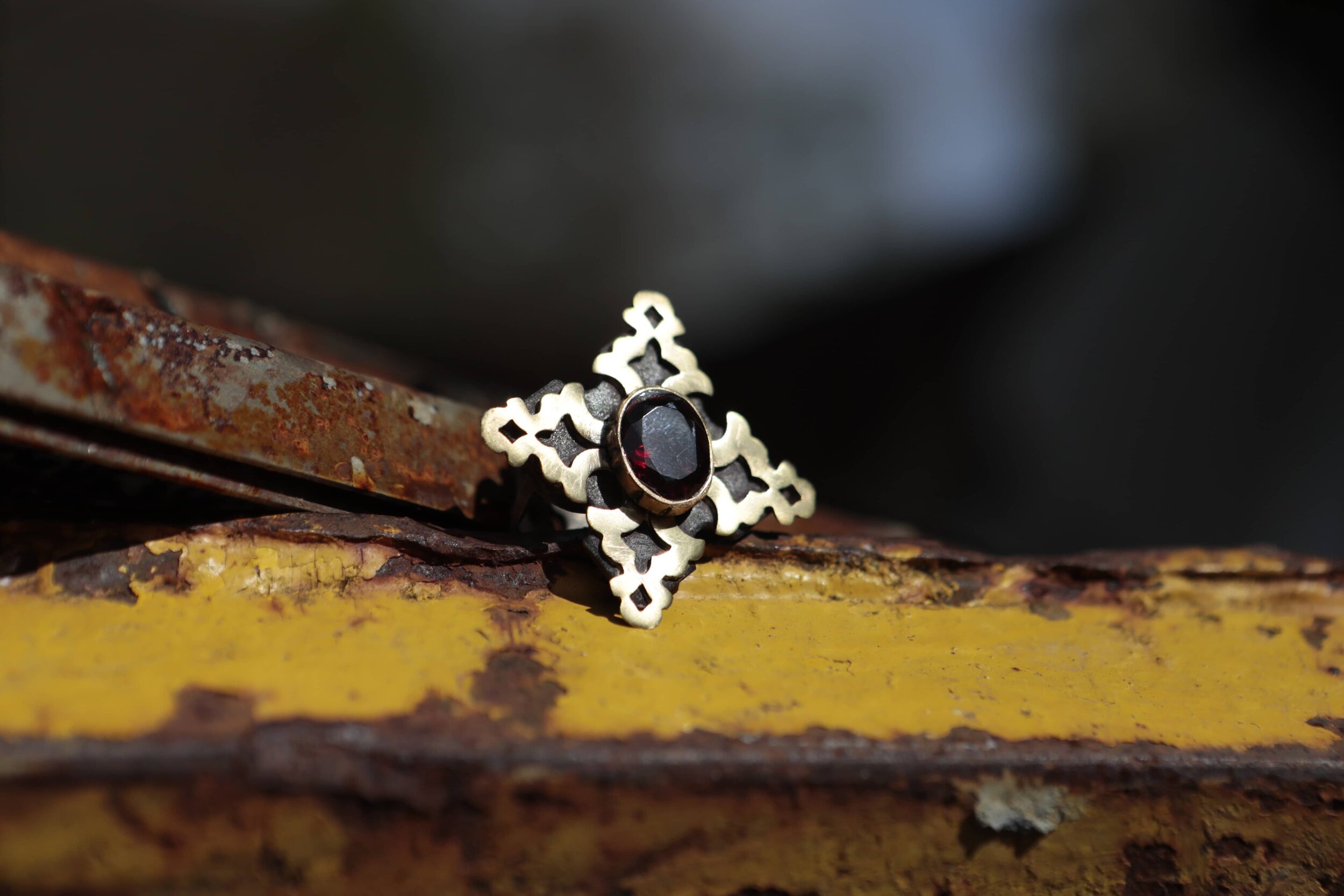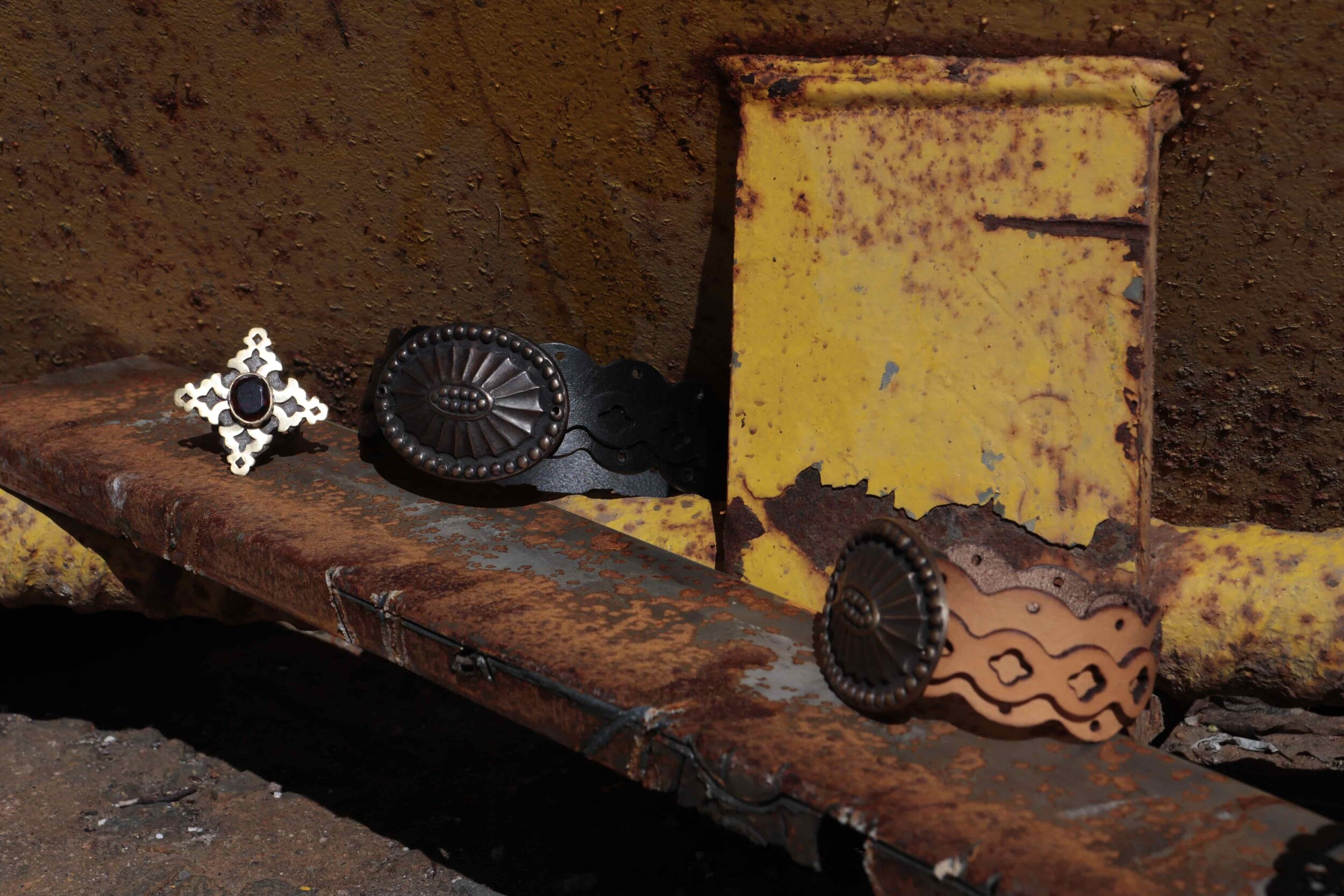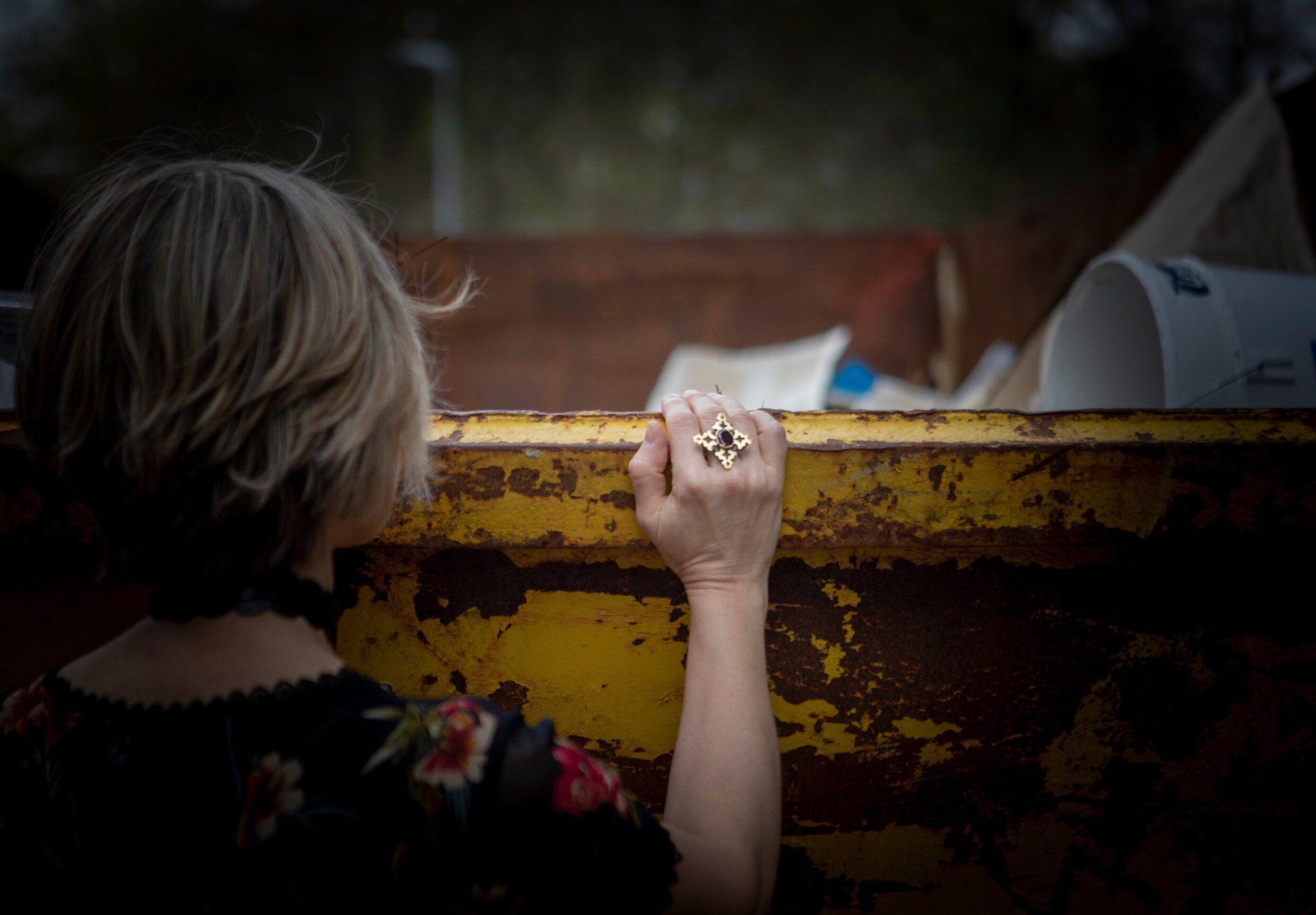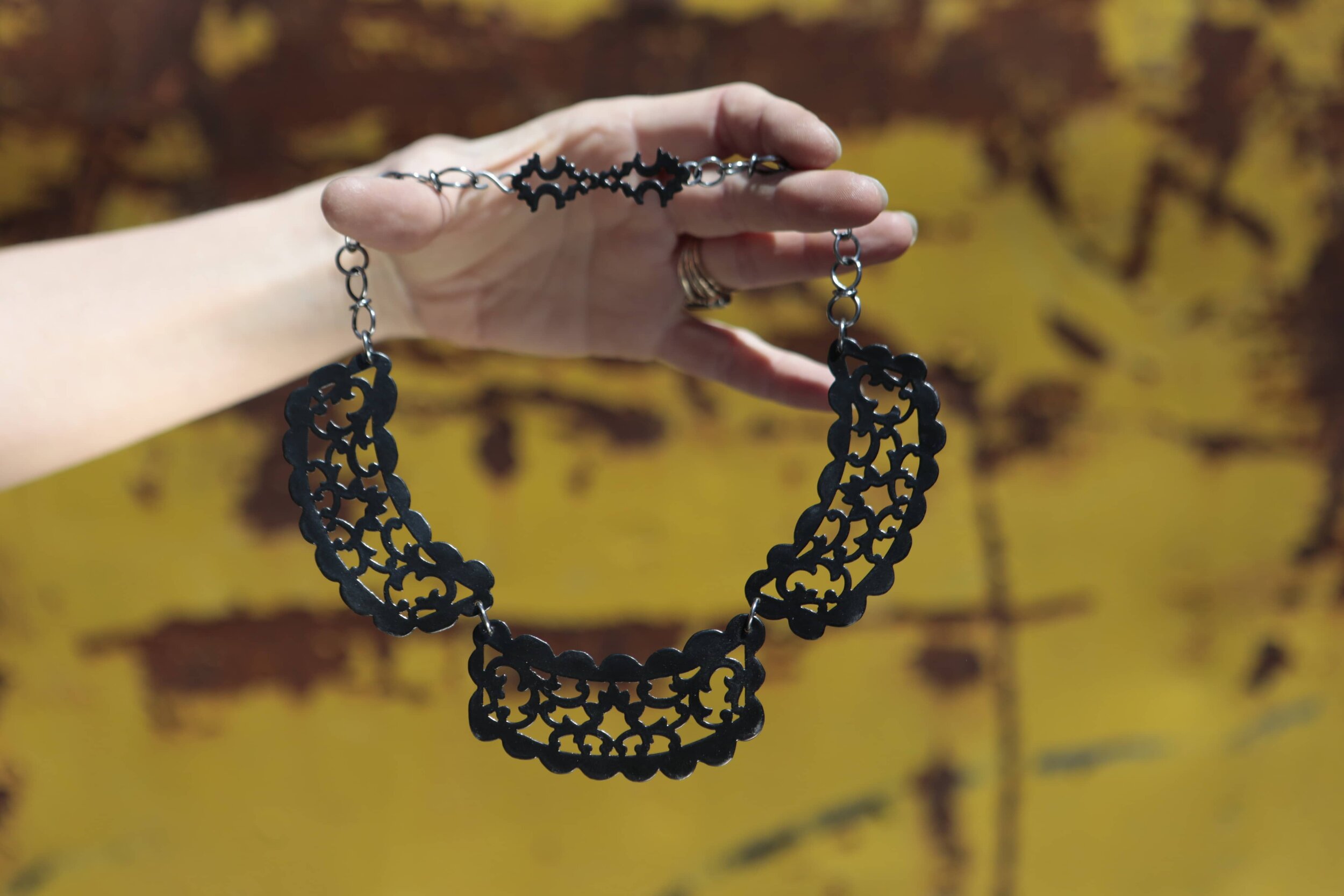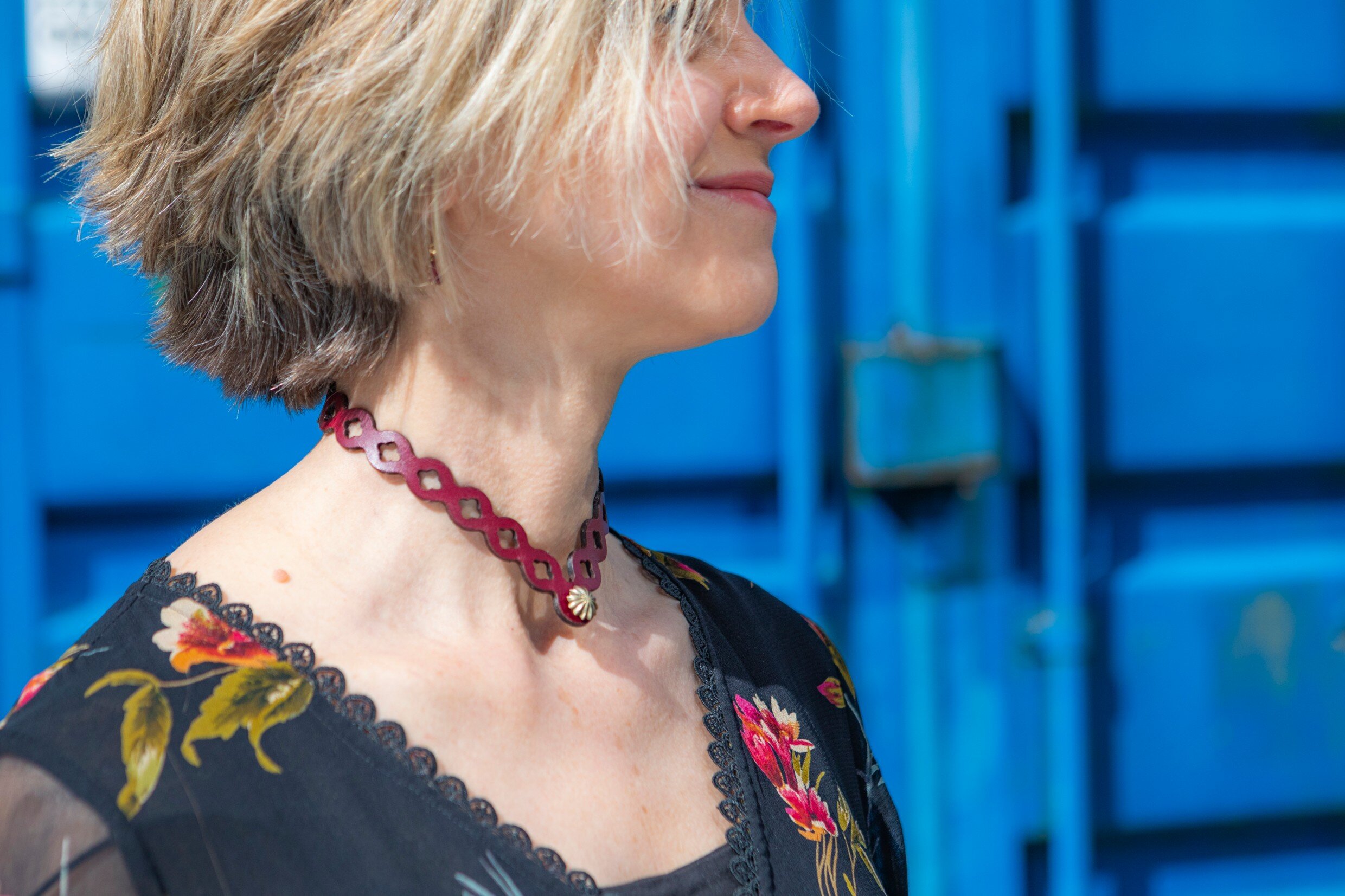Ethical Making @ Gray's School of Art
Ethical Making @ Gray’s School of Art
Despite studying and working during a global pandemic, students and educators at Scotland’s art colleges persevered to transform their living spaces into inventive workspaces and classrooms. We are thrilled to see both the exciting and innovative work they have produced over the past year and a half and the continued passion of students and educators to incorporate ethical making into their studies.
We spoke with our Ethical Making Student Ambassadors from Scotland’s art colleges to learn more about how they and their colleges have adapted and incorporated sustainable practices into their workshops, jewellery making and silversmithing.
Maria Laidlaw, Ethical Making Student Ambassador at Gray’s School of Art in Aberdeen, told us about their college and the work they continue to do to be sustainable leaders.
Gray’s School of Art is adopting and advocating for the following sustainable practices in their jewellery department.
Sharing information and articles in their workshop spaces about why ethical making and sustainability is important and resources for students to implement practices.
Looking for alternatives to harsh chemicals, such as implementing a changeover to eco-pickle and alternative metal etching.
They already use Epoxy Bio-resins and lead-free enamels, and they include information about eco-patinas in patination workshops.
Their workshop correctly disposes of any chemicals used by neutralising acids.
They are looking into how and where to take both precious and base metals for smelting.
Researching potential workshops to teach new sustainable practices.
Sending metal scrap to be reclaimed and minimising metal scrap waste by introducing categorised metal scrap bins.
Gray’s School of Art recycle silver and gold in their workshop.
Silver recycled by Maria last term.
Looking forward, what's next for Gray’s School of Art’s Ethical Making journey?
They plan to change their pickle to a non-toxic option once they have used up what they already have in the studio.
The technician at Gray’s is planning to introduce studio workshops about how to melt and reuse silver scrap.
They will arrange collective meetings between technicians, ambassadors and management quarterly to discuss progress toward sustainability in their department.
Establish a handover meeting at the end of the academic year or in the event of staff changeover.
Arrange extracurricular workshops pertaining to eco practices such as how to use eco patinas, eco etching and recycling metals, and have discussed the possibility of their graduate in residence leading these.
5-year Plan at Gray’s School of Art
Acquisition of a burnout kiln
Acquisition of new casting machines including central fugal casting
Acquisition of granulation tank
What changes have you made in your own practice?
Maria has devoted a great deal of time and effort into researching sources of scrap metal that can be used to create new pieces and designed a collection around this task.
Maria has also advocated implementing sustainable practices with other students and staff, such as separating metal scrap in the workshop, cutting down on paper towel waste and introducing more information about sustainable practices into workshops.
Maria took a proactive approach in engaging with her tutors and technicians by setting up meetings to discuss how ethical practices could be achieved. This resulted in time being set aside regularly between ambassadors and staff for discussing how they could implement more sustainable practices and collaborate toward implementing their goals.
Materials Maria retrieved from salvage.
Maria’s work and practice:
During the past two years I have chosen to work with repurposed materials. It gives me great pleasure to use objects that have been disposed of and create a new life for them.
As a maker, my approach to materials has always been quite pragmatic, however, at this moment in time it has never been so relevant.
My preference is to use materials that can be reworked wherever possible and to mitigate thoughtless production processes.
‘These are materials that I have taken from the brass lanterns and bowl retrieved from salvage. The pieces have been cut apart, sanded and filed. The pieces will be reassembled to create new bespoke pieces of jewellery for my degree show.’
The essence of slow making and mindfulness are integral to my practice - not only do I gain a sense of grounding and pleasure from the process, I hope that joy is imbued in the work and passed on.
The materials used for Maria’s SKIP 2 collection were sourced from metal salvage, skips and objects that were kept specifically for repurposing.
RING: For the RING piece, the garnet was sourced from a brooch I purchased in Kathmandu in 1991. The brass detail on the top was cut away from a discarded brass lantern. The steel component was repurposed from an upcycled armoire and the ring shank came from a tarnished metal vessel that was collected from a skip.
NECKLACE: The three larger components were also part of a skip sourced metal vessel. The closure was fabricated from the brass lantern and matches the brass pieces used on the ring. The piece was powder coated black to strengthen the metal and create a contemporary finish. The metal's composition is uncertain, so powder coating assured a safeguard against a potential allergic reaction. The chain is handmade with blackened mild steel incorporating a lacey finish in keeping with the filigree pattern.
LEATHER PIECES: For the black cameo CHOKER and tan wrist CUFF, the oval brass pieces were repurposed from a chandelier salvaged from a skip, they reminded me of a traditional cameo which led to a modern twist on leather chokers that were once in vogue. The cameo pieces can be removed which allows the piece to be worn in different ways. Leather offcuts were donated by an Aberdeenshire based leather designer, are UK sourced and vegetable tanned. All the leather pieces in the collection have a retro vibe and can be worn casually or formally.
Scalloped edging unites the entire collection and while the work has a sense of oldness about it, we know that classic patterns and designs endure – what is old becomes new again. The extension of a materials lifecycle enables them to be part of a new story, hopefully a story that has a happy ending.
Tell us about your experience of being an ethical making ambassador.
This has been my privilege, as ethical and sustainable making are at the heart of what I do as a creative maker. I wish we would have had more face-to-face interaction with the youngest students to share the philosophy behind the role but that couldn't be helped. I was fortunate to liaise with the department technicians who are also of the same mindset on two occasions and had really productive meetings. I am optimistic that the goals set and initiatives discussed will move forward as lockdown eases.
What is the most impactful thing you have learned this year that you will take into your future studies/career?
The most impactful thing that I have come away with is in knowing that small changes can make a big difference. If everyone takes the time to make small changes - this can make a big impact. Cooperation and collaboration are key!
Our thanks to Maria for sharing their work with us and the wonderful progress being made at Gray’s School of Art.
This blog is part of our blog series devoted to sharing ethical making practices in the Scottish Art Colleges.
